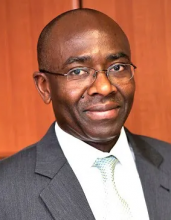You are here
Fairer green finance
Nov 20,2022 - Last updated at Nov 20,2022
CAIRO — This month’s United Nations Climate Change Conference (COP27) in Egypt looks set to be a defining moment in what will surely be a pivotal decade for climate action. Whereas COP26 in Glasgow last year was dubbed the “finance COP”, this gathering has been dubbed by some the “implementation COP” to reflect its focus on translating funding commitments into concrete plans.
COP27’s agenda underscores the need for stronger multilateral cooperation and highlights the urgency of honoring the international community’s pledge to close climate-financing gaps in the Global South. Failing to do so will make it difficult to meet the 2015 Paris climate agreement’s central goal of limiting global warming to well below 2°C, relative to pre-industrial levels, and will render the efforts to limit the temperature increase to 1.5°C all but impossible.
Converting financial commitments to investment opportunities is critical to strengthening climate resilience in Africa. While the continent faces the quadruple threat of climate change, disease outbreaks, food insecurity, and political instability, African countries also struggle with huge budget pressures that impede large-scale investment in economic development. If funding gaps go unaddressed, they will continue to undermine the continent’s opportunity to leapfrog the need for carbon-intensive technologies for progress in achieving the UN’s Sustainable Development Goals (SDGs) and hamper efforts to avert climate catastrophe. The consequences will be felt far beyond Africa’s borders.
According to recent Climate Policy Initiative estimates, the global climate-financing gap, the difference between the total cost of combined Nationally Determined Contributions under the Paris climate agreement and the financing that governments can provide from their own resources to support the net-zero transition until 2030, is roughly $2.5 trillion. Moreover, funding for climate-adaptation programmes currently lags behind investment in mitigation measures, despite the Paris climate agreement’s emphasis on the need to balance the two.
But Africa’s budget shortfall also reflects the structural problems of African economies. In particular, energy poverty has historically undermined economic diversification and exposed the region to negative global shocks. The continent’s climate-funding gap amounts to 10 per cent of its combined $2.4 trillion GDP, more than double its annual spending on health and social programmes, as chronic deficits have constrained governments’ ability to expand public investment and attract private capital.
In 2018, the International Monetary Fund highlighted the myriad challenges facing Sub-Saharan African countries in closing the financing gap, including the need to broaden the tax base to increase the capacity of governments to mobilize more revenues domestically. While significant progress has been made over the last two decades, the region’s performance remains dismal. Africa’s median revenue-to-GDP ratio is 20 per cent, compared to 28 per cent in East Asia and 42.3 per cent in Europe.
The financing gap has been magnified by the incidence of sovereign debt which reflects pernicious “perception premiums”, the overinflated risks that credit-rating agencies assign to African countries, irrespective of these countries’ macroeconomic improvements or growth prospects. With the spreads between African sovereign bonds and US Treasuries now in the double digits, debt-service payments have become African governments’ largest expenditure. Interest payments are expected to consume more than 45 per cent of Egypt’s government revenues this fiscal year and swallow up over half of the government revenues in Ghana and Sri Lanka.
While elevated interest rates deter investment by setting unrealistically high return expectations, they also directly affect public spending. Financing gaps tend to cloud countries’ development horizons, with urgent short-term needs crowding out the most important long-term investments required to transform economies and expand opportunities for the benefit of future generations. Honouring external debt commitments, for example, will always trump funding climate-resilient infrastructure projects.
But in a world awash with cash, countries should not have to choose between saving the planet and preserving their access to capital markets. At $210 trillion, global financial assets are worth roughly double world GDP. An inclusive framework that fosters multilateral cooperation between key stakeholders (governments, donors, development banks and private companies) and promotes innovative financing mechanisms could de-risk investment to catalyse private-sector financing. Such a framework must also improve the global distribution of green financing, which to date has been skewed heavily toward developed economies. In the first half of 2021, for example, high-income countries issued 76 per cent of the world’s green bonds.
Policymakers and multilateral development banks can help de-risk green infrastructure investment by encouraging the use of innovative financing instruments such as guarantees, insurance, blended finance, and credit-enhanced bonds. Attracting more banks and institutional investors would raise Africa’s share of global climate financing, which is currently just 5.5 per cent.
Insuring investors against specific hazards and reducing the risk of losses, policymakers could increase that share. Similarly, offering credit protection and extending loan maturities would help leverage more private capital to develop long-term green infrastructure projects.
Donors and multilateral lenders have a crucial role to play in mitigating overinflated risk perceptions and creating incentives for investors to finance green projects in developing economies. Through concessional funds employed for blended finance and grants, these stakeholders could create first-loss positions to improve portfolio ratings and de-risk projects. As more investors enter the climate-debt market, multilateral institutions could also enhance the credit of green bonds, thus raising risk appetites and channeling patient capital to where it is most needed.
A robust global carbon market would promote transparency and encourage decarbonisation. Likewise, multilateral development banks’ ability to leverage their financial resources to support a liquid secondary market in developing-country sovereign bonds is essential to putting African economies on a path to sustainable development. The nexus between the SDGs and climate change is such that environmental leapfrogging could also set the region on such a path.
The burgeoning green-bond market has entered a virtuous growth cycle and is fast approaching the long-awaited milestone of $1 trillion in annual green investment. But to encourage equitable climate finance, investors must avoid the stigmas that have long plagued the fixed-income market, where foreign investors either shun Africa or invest there only at exceedingly high premiums.
Unbiased financing is crucial to winning the global battle against climate change. To ensure sustainable development, we must encourage asset managers to lead the charge.
Hippolyte Fofack is chief economist and director of Research at the African Export-Import Bank (Afreximbank). Copyright: Project Syndicate, 2022.













